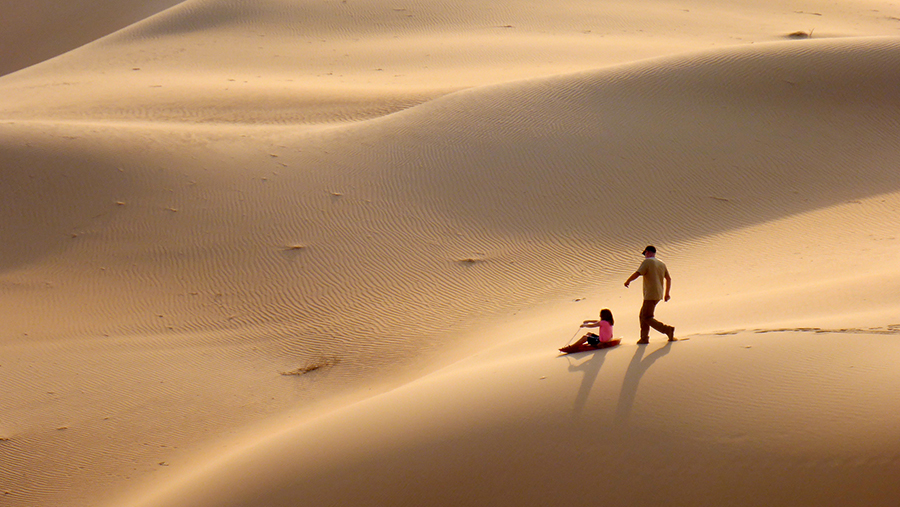To some, Liwa is nothing but magnificent sand dunes. However, Liwa offers so much more, as my group found out when they joined me for three nights and four days at the Liwa Hotel during Eid Al Ahda.
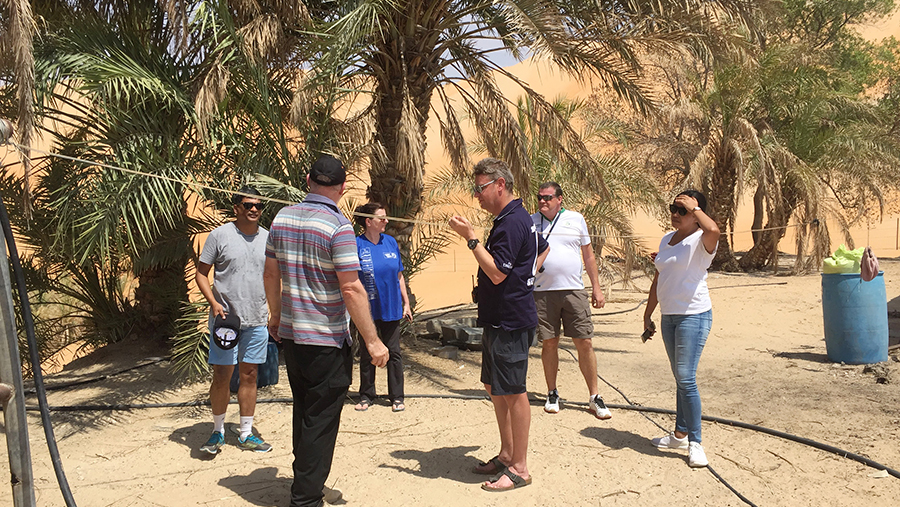
Our first trip out on a Thursday afternoon was a sightseeing trip and our first stop was to take in a farm where there were so many different animals we nicknamed it the “Liwa Zoo”. Next, we visited an old fort followed up by a visit to a fish farm (yes really!), then a stroll around a date plantation with an even older tower and finally resting at a lovely viewpoint which was the perfect launch-pad for sand sledging! Our peaceful spot was “buzzed” by a local who came by in his Land cruiser Pickup and showed off some advanced off-roading manoeuvres as the sun moved ever lower in the sky but that’s what you get when you visit the most popular off-road site in the UAE and its all part of the larger experience.
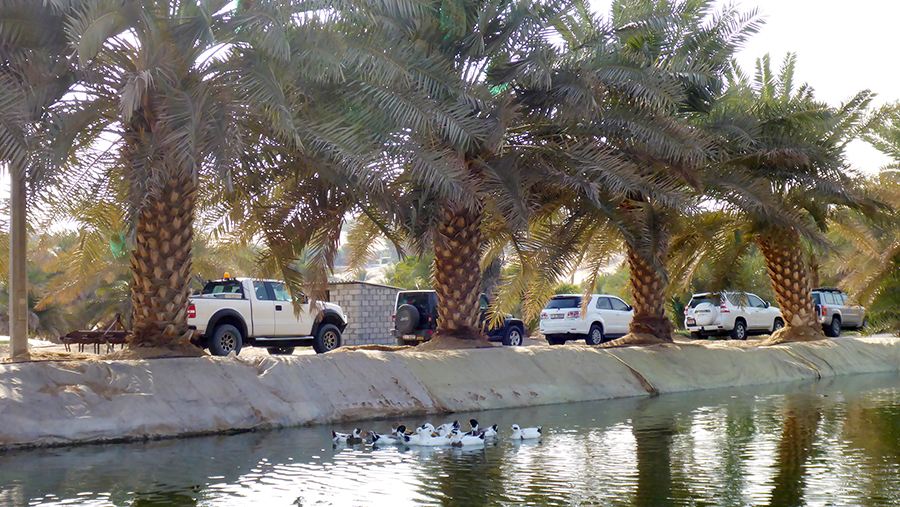
The plan for day two was to have two separate offroad drives; a visit out to one of my favourite landmarks, the abandoned water tanker, in the morning and to visit another area in the afternoon. However, we had a delayed start due to thick fog. Once we did get going we encountered some ultra-soft sand which added a few “situations” further slowing our progress. It’s always best not to have firm plans when driving in Liwa as the desert can sometimes be cruel so we went with plan B, which saw us drive 119kms on the sand, albeit much of it quite easy.
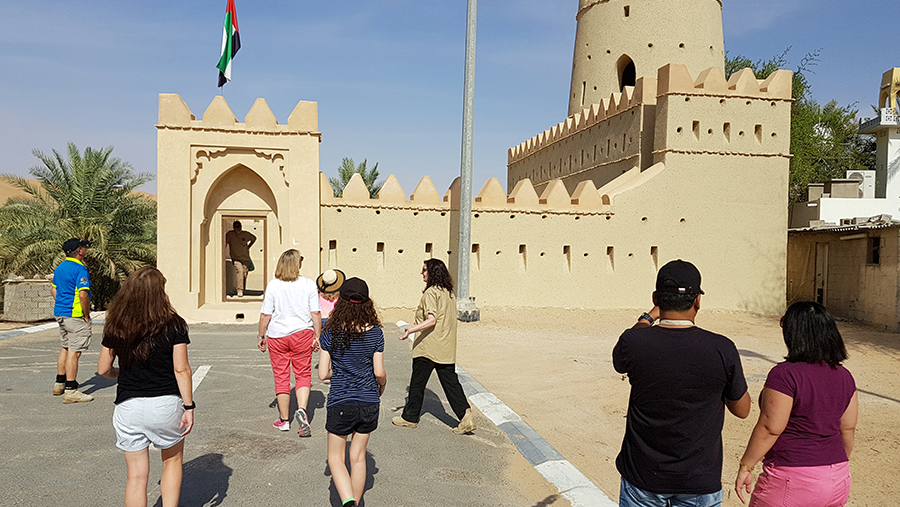
We had some rookies with us and having given them a safety briefing at the hotel the night before, we stopped when required to show them the techniques to pilot their cars safely through the sand.
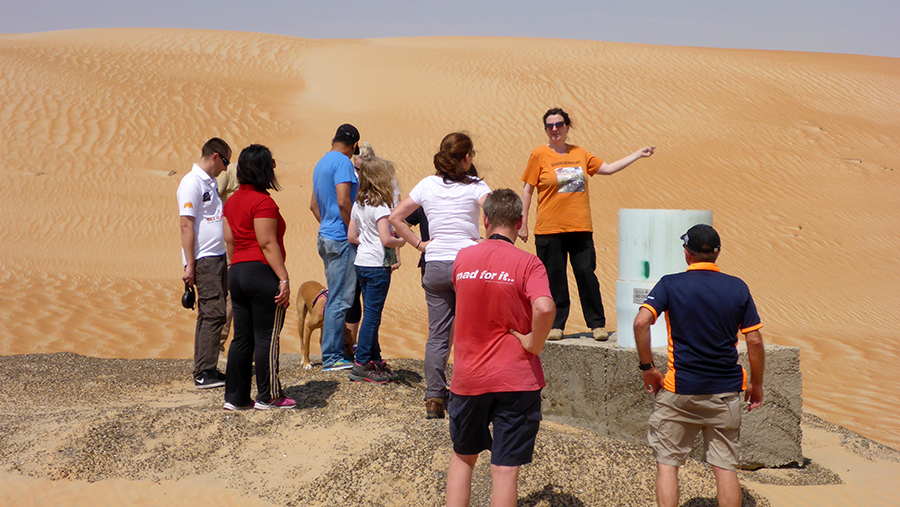
Our first waypoint was a modern-day “wishing well”, in reality, an aquifer cover. Each of us dropped a coin in, made a wish and moved on. I think most of the wishes were for the sand to be not quite so soft!
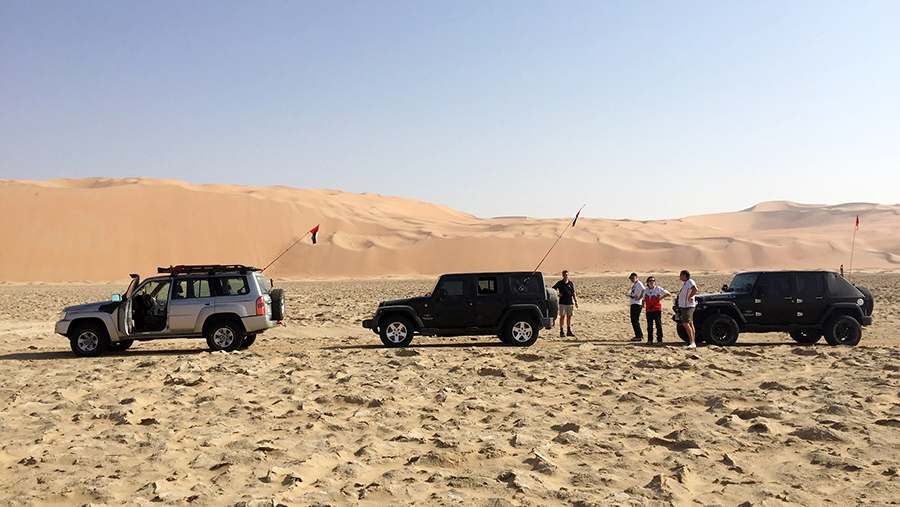
By lunchtime, we had reached the “fake palaces” which are a series of concrete water tanks complete with painted windows, now abandoned, and there I asked each driver individually if they wanted to return to the hotel or to press on to reach our original destination. Everyone agreed to carry on to the abandoned tanker so we did; stopping on the “Tropic of Cancer” line for a photocall, pausing a little while at a desert oasis to enjoy some time out of our cars in a slightly cooler environment, before driving off and reaching the Tanker just after mid-day.

Of course, a photo call was necessary with most of the group climbing onto the crew cab. By now, however, the mercury had reached 49C and for most it was far too hot to sit down on it! The route between the fake palaces and the tanker is generally quite smooth, albeit with larger drops and climbs than the first section of the drive. Everyone was now taking the drive in their stride and drove beautifully, and having taken almost five hours to reach the tanker it only took us 2.5 hours to return to the road. Needless to say, the second trip of the day was abandoned in favour of a couple of hours relaxing in the pool, a choice that everyone appreciated!
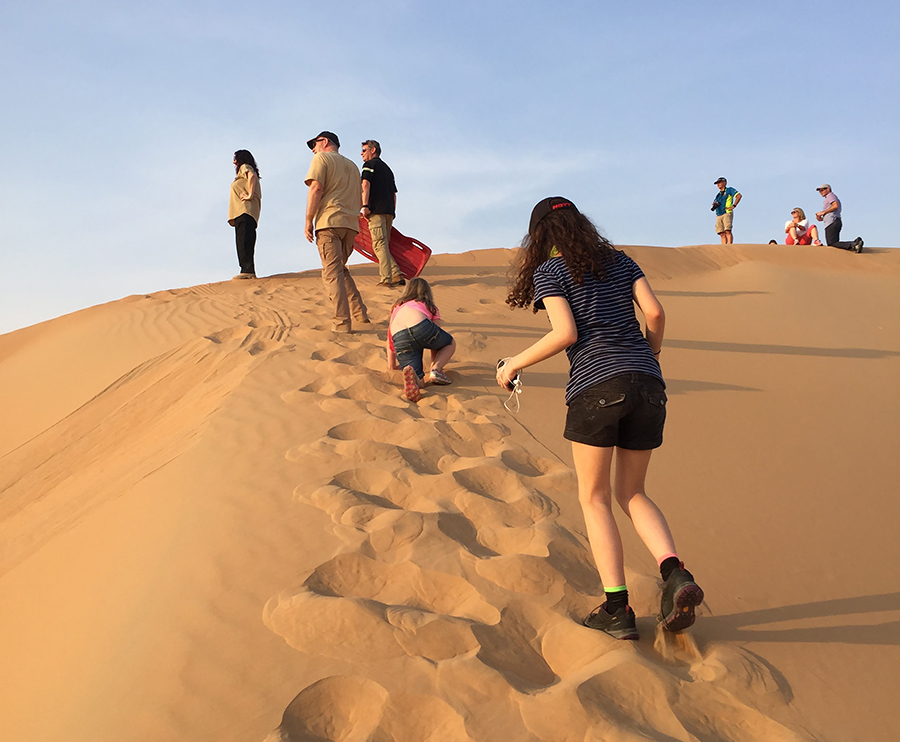
Day three saw us heading westwards via the AradaRoad, followed by 30kms on a sand-covered patch, somewhat tricky in places, to reach a solar-powered oasis. There must be something about this particular area which surrounds the patch as you always see wildlife here, sometimes a dhaub (huge lizard), sometimes a desert hare, but on this occasion, two curious gazelle who watched us from a distance. The oasis is a stop-off on most of my trips in the area, the date plantation being tucked up against a huge slipface at the site of a natural oasis. In the old days, a simple well would have been located here but nowadays more water is extracted from the ground using pumps, the electricity being supplied via solar powered panels.There are over 100 palms here which bear fruit and testimony to the successful use of free energy cared for by the ever-present Mr Mohamed. Having offered him our Eid gifts and taken some time out to drink tea and eat dates, we bade our farewells and returned to the hotel for some more pool time.
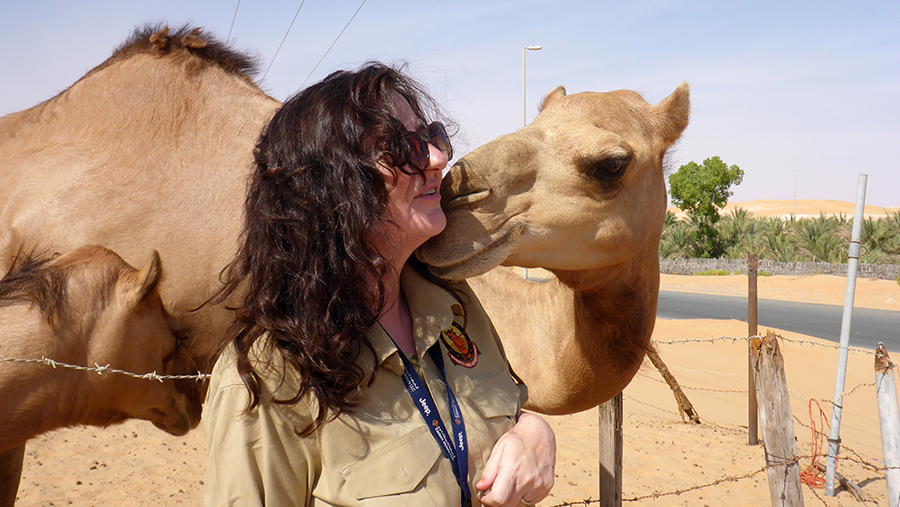
Our last trip of the weekend was an offroad drive into the amazing dunes of the Liwa Crescent area; there are many different dune landscapes in this area and I had saved the best until last. This is the start of the Rub Al Khali, the largest sand dune desert in the world, which covers a quarter of a million square kilometres, mainly in Saudi Arabia but also spilling over into Oman and the UAE. Much of the route is long Sabkah, dried up salt flats, with short and very tricky dune crossings to reach the next one. There is easy access to the first and second Sabkha’s and for this reason, there are camel farms here; our group paused for a good few minutes while a line of hungry camels made their way over to their feed trough for breakfast. Some of our party had left the day before so we were now left with three cars and we made light work of the rises and dips on our route. The mercury was rising quickly, so after 15kms we headed back to the road, taking a small detour to tackle a slipface a few times as well as providing another opportunity for our youngest guest to enjoy some more sand sledging!
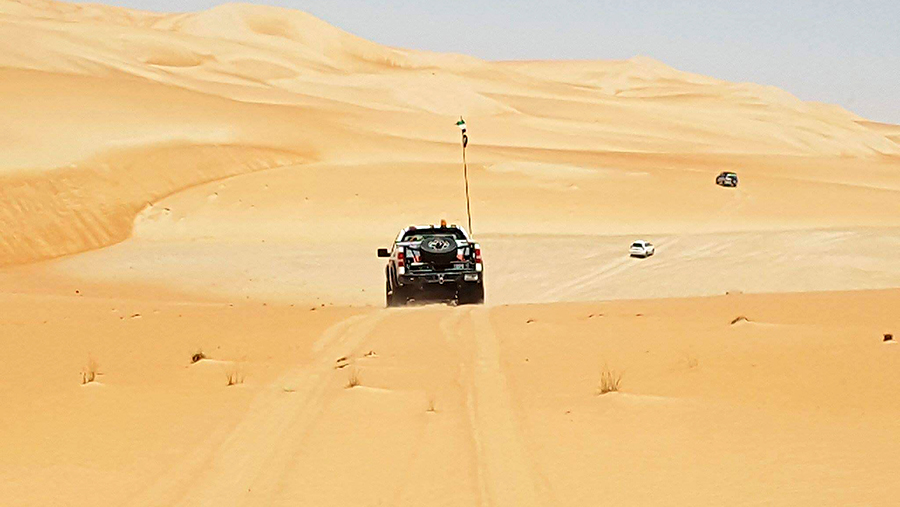
If you would like to join one of Marina’s trips you can find three listed in the calendar of events near the front. If you would like to explore the forts and towers of Liwa, you can find Marina’s suggested onroad routes and waypoints in the OutdoorUAE August 2017 edition. ■
Marina Bruce is The Desert Diva. You can read about her travels on www.thedesertdiva.com, connect with her on Instagram (thedesertdivame),
twitter (@15shadesofsand) or Facebook page (https://www.facebook.com/DesertDivaUAE/)
Words by: Marina Bruce and Neil Bruce
Photos by: Heather Gorman, Alasdair Gorman, Linda Marshall and Jay

